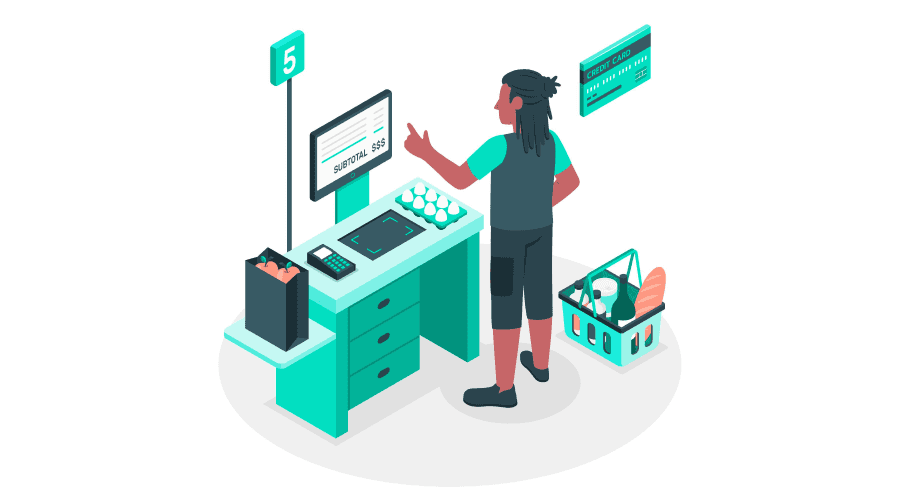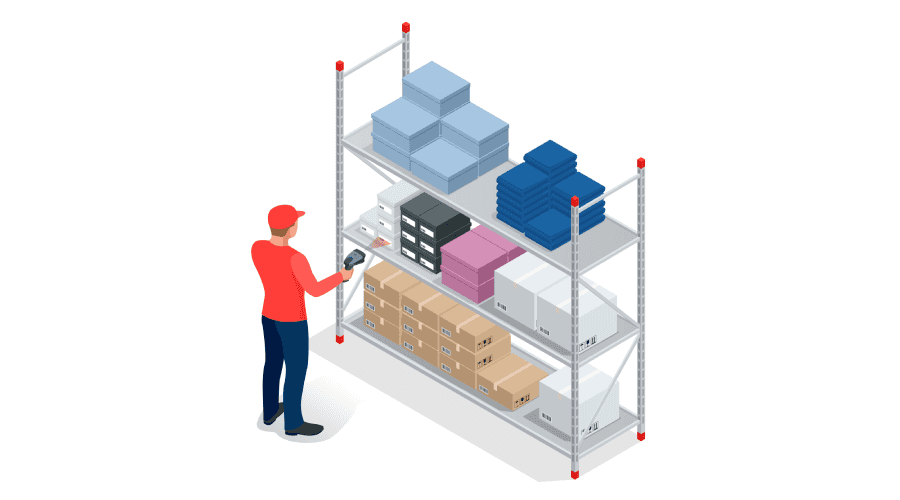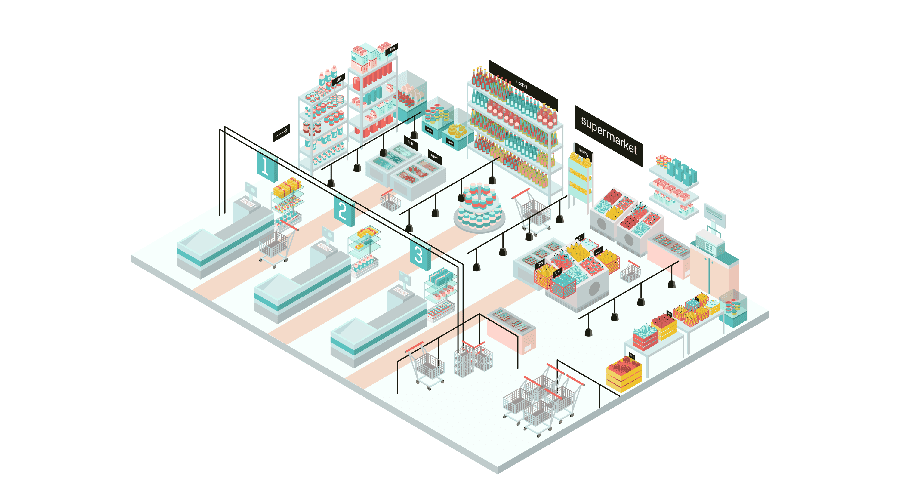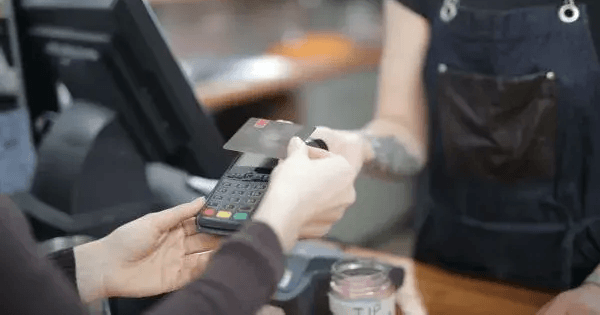We are in the era of the Internet of Things (IoT), where virtually every operation—big or small, smart or simple—relies on a constant internet connection.
This connectivity has unlocked a world of opportunities for the retail industry, enabling it to tailor operations like never before.
IoT allows retailers to gather invaluable insights into shopper preferences, behaviors, and purchase histories through integrated data analysis. This, in turn, enables them to deliver highly personalized experiences to their customers.
As a result, many retailers are embracing IoT technology to gain a competitive edge.
In this blog post, we will explore the key benefits of IoT in the retail sector and highlight some of its most exciting use cases.
Keep reading to discover how IoT is revolutionizing the retail industry!
Overview of IoT in Retail
IoT stands for the Internet of Things.
It encompasses a wide range of electronic devices—like washing machines, light bulbs, refrigerators, and door locks—that aren't traditional computing devices but are connected to the internet. These devices can send and receive data, making them "smart" and enabling them to communicate with each other.
In essence, IoT brings internet connectivity, automated control, and data analytics to physical objects.
For consumers, this translates to interacting with a global data network without needing a screen or keyboard. Instead, devices use technologies like Bluetooth beacons, sensors, Global Positioning System (GPS), and Radio-Frequency Identification (RFID) to connect and communicate.
In the retail sector, IoT has become increasingly relevant due to its potential to revolutionize various aspects of the industry. It helps retailers track stock levels, monitor the location, condition, and movement of products, and gain a comprehensive view by connecting devices and integrating data with their systems.
IoT enhances supply chain efficiency, provides invaluable customer insights, and offers a smarter shopping experience.
Here are some statistics that underscore the growing significance of IoT in retail:
Global IoT Spending
- According to the International Data Corporation (IDC), worldwide spending on IoT will touch around 805.7 billion USD in 2023. This is a 10.6% increase compared to 2022.
- In the future, by 2026, the total spending on IoT is predicted to go over 1 trillion USD, growing by about 10.4% every year from 2023 to 2027.
Estimated Market Size of IoT in Retail
- In 2021, the worldwide market for IoT in the retail industry was worth 28.14 billion USD. Experts predicted it to grow and reach 177.90 billion USD by 2031, with a CAGR of 20.3% from 2022 to 2031.
- Retailers are investing in IoT solutions to improve customer experiences and streamline operations. Largest Regional Market
- North America (U.S. & Canada) dominates the IoT in the retail industry.
Inventory Management and Stock Visibility
- 72% of retailers plan to implement IoT solutions for supply chain management.
- Nearly 96% of decision-makers in retail are ready to make amendments needed for adopting IoT.
- RFID and IoT technologies can help retailers achieve up to 98% inventory accuracy.
Also Read: IoT Tech for Consumer Healthcare
Key Benefits of IoT in Retail
As connected devices become increasingly common, retailers are discovering new ways to enhance customer experiences and streamline operations.
By developing a network of smart devices and implementing IoT solutions, retailers can unlock numerous benefits and gain deeper insights into consumer behavior. Here’s a look at the key advantages of integrating IoT into retail:
1. Automated checkout

Ever been stuck in a long queue at a retail store's checkout?
It's not fun, right?
Lots of people feel this way about the checkout, and some even leave without buying anything!
But that's not good for your store's business.
Stores can use IoT technology to make things easier with checkout machines or PoS (Point of Sales) systems.
IoT-powered POS systems use tiny smart tags on items customers want to buy. When a customer walks past a special area at the store's exit, sensors read these tags and know what they’re getting.
The system then charges the customer’s account automatically through their phone. No lines, no scanning – just quick and easy shopping!
2. Optimized supply chain management
IoT in smart retail is all about using GPS and RFID technologies to track products throughout their supply chain.
Connected sensors give real-time data, helping stores identify bottleneck issues and speeding up deliveries.
This data is useful, especially when moving perishable stuff, where the storage temperature matters greatly.
It also helps makers, suppliers, and centers ship faster to stores and customers.
3. Efficiency in moving merchandise
Managing merchandise movement can be a real headache for a retail store.
Even GPS has its limitations for tracking goods.
But the Internet of Things (IoT) is a game-changer here.
With IoT technology, you don't just track shipments – you optimize routes, monitor the condition of your products, and predict the best delivery times.
IoT tells you exactly how close your merchandise is to your store.
4. Better customer experience
Think about all those video surveillance cameras, smartphones, and social media sites that stores use. They help retailers get essential customer behavior insights.
IoT gives retailers many opportunities to use data analytics for making smart choices.
Retailers can predict customer behavior and make the shopping experience even better.
Guess what? About 8 out of 10 stores have done this, and it makes customers satisfied. Plus, it helps stores run better and smoother.
5. Better management of inventory

An inaccurate inventory tracking can lead to stock-outs or overstock, costing retailers billions annually.
IoT can smoothly tackle such issues by automating inventory visibility.
RFID chips, beacons, and sensors can easily synchronize products and inventory with data centers.
Besides, smart price tags and digital displays integrated with data analytics help improve warehouse inventory control and stock levels.
6. Energy Management
Energy consumption is a major contributor to cost consumption for retail businesses.
Be it the extensive use of refrigeration, lighting, heating, or air conditioning at their stores/warehouses, too much energy consumption is an issue.
Optimizing these energy sources can lead to cost savings of around 20% annually. Smart IoT devices can play a crucial role in addressing energy management and efficiency issues.
Various IoT platforms are available these days that can track, watch, and send alerts to store staff for sudden temperature changes, energy consumption, heating, gas leaks, power outages, and more, all thanks to integrated sensors.
How IoT is Used in Retail (Top 7 Use Cases)
Many of the primary benefits of IoT in retail come from efficiency increase and automation. These are facilitated by smartphones that are used to provide location-based services, such as visual search or guided shopping.
There is a wealth of distinct IoT use cases in retail, including supply chain tracking and analytics, employee apps to track time in/out and breaks, and customer loyalty programs.
Here are the top seven IoT use cases in retail.
1. Preventing theft with geo-fencing
Shoplifting, employee theft, and supplier theft cause businesses to lose millions of dollars.
With IoT, a business can use geofencing devices with RFID to create boundaries around the store.
For instance, a supermarket can set up geofencing around exits or near checkouts. If a customer tries to take something past this boundary, an alarm goes off, and the store manager is alerted.
Geofencing also tracks employee movements, as sometimes employees steal too, which helps protect against that.
2. Self-checkout
Let's talk about a common shopping hassle: the checkout marathon.
We all know that feeling when the store is jam-packed, and you'd rather leave than stand in line.
Well, guess what?
IoT can come to the rescue.
IoT-driven, automated self-checkout resolves the problem of long lines and overcrowded retail stores, simplifying the shopping experience for customers.
As the customers stroll out of the store, IoT tools read the smart tags on their items, and their mobile payment app gets charged - so no waiting is required.
This cashier-less shopping experience is preferred by many at retail stores.
3. Smart shelves

IoT creates smart shelves that never let items go out of stock or misplaced on the wrong shelf.
These smart shelves are like detectives, armed with weight sensors and RFID tags that can be scanned. They keep track of what's on display and what's stored away.
It always makes sure your inventory stays accurate and even prevents theft.
Oh, and there's more: these smart shelves can even send notifications, like "Hey, this item is going to be expired soon!" or about customer interest in specific items.
4. Cold chain monitoring
Dealing with perishable stuff like food, medicine, or bio can be tricky.
But IoT can step in and save the day.
IoT devices and sensors that keep an eye on things like product temperature, humidity, and pressure, all in real-time.
It ensures the safety and quality of your products.
5, Predicting in-store wait time
Keeping an eye on retail store traffic is like having a superpower for retailers.
It helps them handle crowds, fix traffic jams, improve store layout, and reduce waiting time.
IoT devices and sensors can count how many people are waiting in line, so the store can tell customers how long they might have to wait or open up new lines to speed things up.
It's like a traffic controller for shopping.
6. In-store navigation
Global positioning system or the GPS helps you find your way outside, but what about indoors, like in a retail store?
Well, that's where IoT comes in!
A store with IoT devices that talk to each other using Bluetooth, Wi-Fi, and special tags is a great use case for IoT in retail.
These devices provide interactive maps that guide you to what you want, show you the best path to take, and even suggest things you might like.
This means less time searching and more fun shopping for customers
7. Layout optimization

Smart IoT solutions can track how people move in the store, helping retailers place products where they make the most money.
By understanding how customers act—where they hang out and what they buy a lot—stores can plan the layout to sell more stuff.
This boosts sales and ensures that products with limited shelf life are sold off before expiration.
Also Read: The Future of IoT Development: Trends and Predictions
Examples of IoT Transforming the Retail Sector
The IoT's entry into the retail industry has transformed the user's overall shopping experience. It also helps retailers provide more effective retail management solutions.
Some examples follow:
1. Costa Coffee
Costa Coffee has set up smart vending machines in its stores.
These vending machines have a screen where customers can easily choose their beverages. They don’t have to stand in queues.
Costa Coffee has installed a cashless payment system and remote temperature monitoring sensors. There's a system for connecting the loyalty card details of customers.
Using IoT sensors, Costa Coffee knows cash collection details, restocking info and avoids overstocking.
Besides, customers like interacting with IoT machines at their stores.
2. Amazon Go
Amazon's physical stores use an amazing way of using IoT technology system that helps both customers and employees.
In these stores, customers can pick what they want and leave without waiting in queues to make payments.
How does this work?
The things they choose have special tags on them. These tags are scanned when customers leave the store.
The total cost of the shopping is calculated, and the money is taken from the customer's Amazon account automatically.
These smart tags make shopping easy and also stop theft.
3. The Intel Retail Sensor Platform
The Intel Retail Sensor Platform is a smart technology designed for retail stores.
It uses sensors and advanced data analytics to provide valuable insights and enhance the shopping experience.
This platform helps retailers gather real-time information about their store's operations, customer behavior, and inventory management.
The Levi's store collaborated with Intel on a project.
They made a system for real team tracking of their inventory.
They use an easy-to-use device with a special RFID tag reader in this setup. They put it in the store. Also, every product available has an RFID tag on it.
The tag reader in the store scans the sales area regularly. This helps them know how many things are on the shelves and if they're running out of something.
If they see some products are understocked, this platform sends a notification to add more.
Transform Your Retail Experience with IoT Solutions from Imaginovation
The future of IoT in retail is bright, with endless possibilities for enhancing the shopping experience. Retailers are continuously discovering innovative ways to leverage this technology.
Are you ready to be a leader in retail innovation? Do you want to stay ahead of your competitors by adopting IoT solutions?
Imaginovation is here to partner with you in designing powerful IoT solutions tailored to your retail business. Our award-winning team specializes in crafting impactful digital experiences that drive success.
Get in touch with us to explore how we can transform your retail experience with cutting-edge IoT technology.
At Imaginovation, we bring imagination and technical expertise together to create remarkable digital success stories.
Let's talk.
Ready to build an app, but not sure where to start?
We've got you covered. Click the button below to get started.





